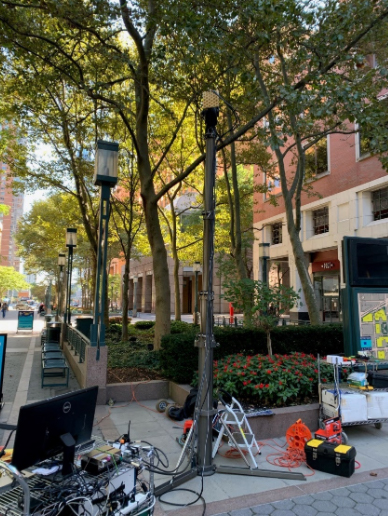140 GHz Cellular – Satellite Interference Study
 The study builds upon a novel channel sounding transmitter and receiver that uses rotatable horn antennas to enable channel sounding measurements in the 140 to 148 GHz band (D-Band). Rappaport’s lab possesses extensive experience in systems at 28 and 73 GHz where the work was used to pioneer the propagation models that led the way to the 5G millimeter wave cellular standards.
The study builds upon a novel channel sounding transmitter and receiver that uses rotatable horn antennas to enable channel sounding measurements in the 140 to 148 GHz band (D-Band). Rappaport’s lab possesses extensive experience in systems at 28 and 73 GHz where the work was used to pioneer the propagation models that led the way to the 5G millimeter wave cellular standards.
Using this 140 GHz sounder, we are conducting a comprehensive measurement campaign in an urban environment, using roof-to-ground, ground-to-roof, and roof-to-roof links from the tallest buildings at NYU’s downtown Brooklyn engineering campus including NYU’s 14-story 370 Jay Street building, and the 8-story Jacobs engineering building, located across one of downtown Brooklyn’s busiest streets. The channel to hypothetical satellite locations can then be estimated by extrapolation from the measurements to the rooftop locations. The measurements are designed to understand the channels encountered by steerable high gain antennas and the impact of reflections and penetration of buildings in air-to-ground and air-to-air scenarios. The work will create a broadband statistical channel model for an urban environment, and the data will be useful for analyzing co-channel and adjacent channel interference, which is a key to the spectrum coexistence between active and passive systems, while enabling the investigation of THz position localization methods for aerial unmanned vehicles.
